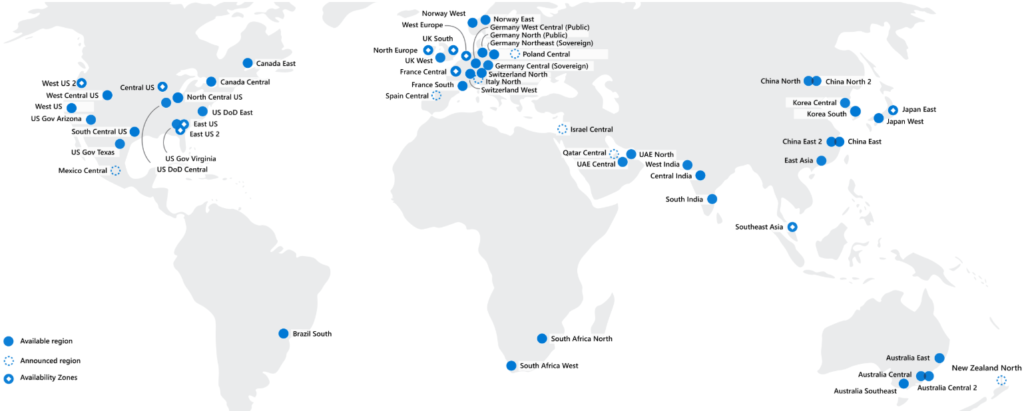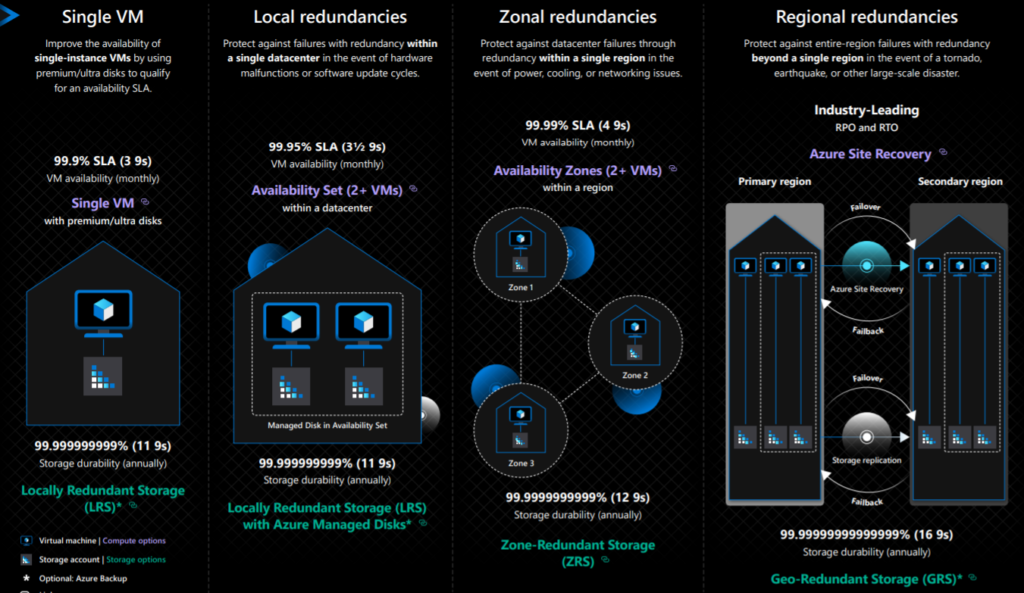Microsoft Azure offers multiple high availability options to meet customer requirements. Such options really help to build an application with higher SLA levels for their customers. Azure’s availability zone can help you achieve your organization’s reliability goals.
Availability Zones are unique physical locations with independent power, network, and cooling. Each Availability Zone is comprised of one or more datacenters. Availability Zones are tolerant to datacenter failures through redundancy and logical isolation of services.

Availability zone – Supported Azure Regions
At the time of writing this article, availability zones are supported only in North America and Europe. (Look at white dot locations in the below image to know the availability regions.). Get the latest information by referring the Microsoft Azure portal

North America:
- West Us2
- US Central
- East US
- East US2
Europe:
- North Europe
- West Europe
- France Central
- UK south
Azure resilience capabilities:
Refer “zonal redundancies” section on the below image.
- Compute- 4 9s (SLA)
- Storage – 12 9s (SLA)

How your application can be protected using the availability zone?
It’s very simple. Deploy redundant application servers in a different availability zone. The following deployment example from azure portal which shows that deploy IaaS VM in each availability zone and configure zone redundant SQL using DBaaS. The zone redundant load balancer routes the traffics to application servers which are deployed in each region. If we lose one region, still your application will be available from other regions. This is one of the classical example that how you can protect your application by leveraging the availability zone.

Hope this article is informative to you.
The post What is the Availability zone on Azure? appeared first on UnixArena.